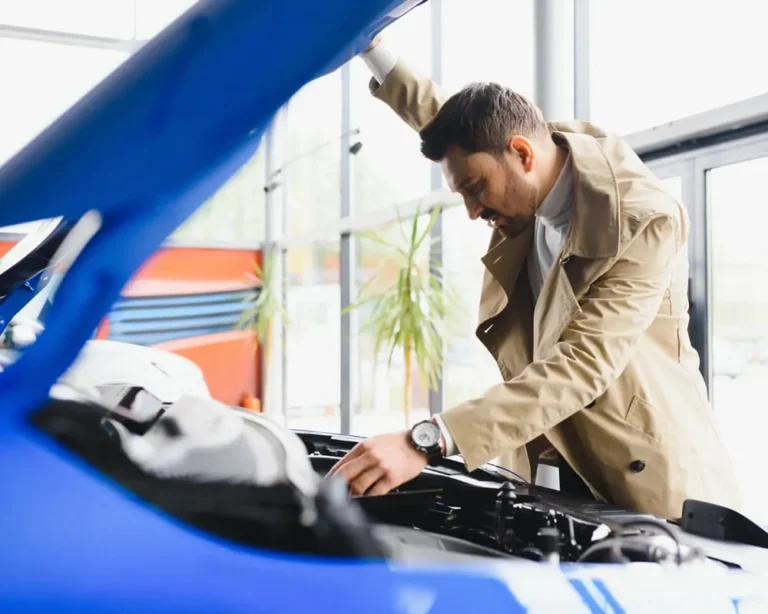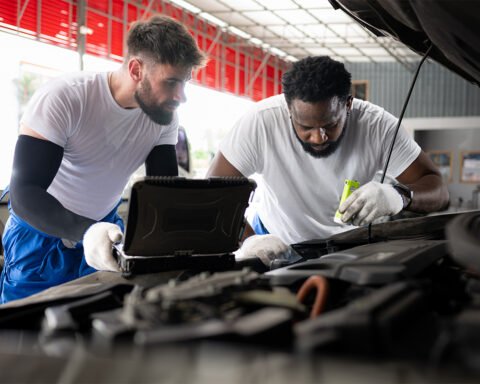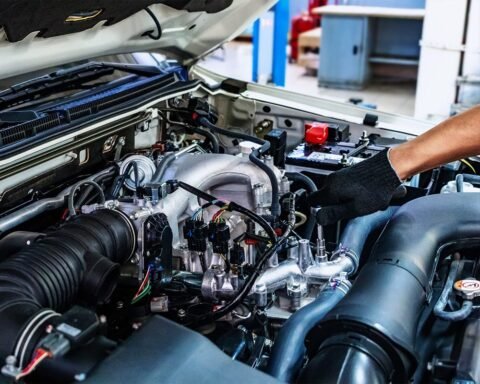It’s a common understanding that you check something before you buy it. The same rule applies when you buy a used car: check the used car’s history!
Buying a used car isn’t just about finding a good price—it’s about knowing what you’re really getting.
Because let’s be honest: some of the prettiest cars on the lot have the messiest pasts.
A slick paint job will make the outer shell look clean, but it won’t cover up years of flood damage, sketchy repairs, or odometer rollbacks.
That’s where checking a used car’s history comes in.
I’ve been around enough cars to know that what you don’t know will cost you.
And in a market where every penny counts, I do not understand why someone would not spend just a few minutes of research on the car’s background.
Key Points Discussed in This Blog
- Tools and reports to use: Carfax, AutoCheck, and manufacturer VIN lookups are essential for getting the full picture.
- Red flags to watch for: Salvage titles, repeated repairs, and inconsistent mileage often signal deeper problems.
- Where to look beyond reports: Understanding visual signs, test drives, and third-party inspections to complement digital reports.
- How to verify maintenance history: Learning to assess service records and dealership logs for real upkeep.
- Protecting yourself legally: Understanding title status and how to confirm a clean legal transfer.
- Why checking a used car’s history matters: Understanding how past ownership, maintenance, and damage reports affect current reliability and resale value.
The Reports You Need To Look At
The two big names here are Carfax and AutoCheck. Both let you plug in a VIN (Vehicle Identification Number) and give you a full report on everything from ownership changes to mileage discrepancies.
- Carfax is great for detailed maintenance history and accident reports.
- AutoCheck shines with auction data and a cleaner layout of title issues.
You can also check manufacturer service portals.
Brands like Toyota, BMW, and Ford let you input the VIN on their site and view dealer-service records.
VIN or Vehicle Identification Number is a 17-digit alphanumeric code used to recognize a particular vehicle.
It is similar to the IMEI code you have for your phone.
.
Red Flags That Should Make You Walk Away
Let’s talk warning signs.
These don’t just suggest a car might have issues—they usually mean it already does. Here’s what I look for:
- Salvage or rebuilt titles: The car’s been declared a total loss. No thanks.
- Odometer rollbacks: If the mileage dips between two ownership records, someone’s been shady.
- Frequent ownership changes: Three owners in two years? That’s not “high demand”—it’s a problem being passed around.
- Missing service records: A car that hasn’t been maintained is a gamble, even if it runs well now.
According to the National Highway Traffic Safety Administration, odometer fraud costs Americans over $1 billion a year.
Check the Car Beyond the Report
Not everything shows up in a PDF.
What I suggest you do is always combine the digital report with a physical walkaround and test drive.
Here’s what you are looking for when going to check the car out:
- Panel gaps or uneven paint = previous damage or poor repair jobs.
- Burnt smells, stalling, or vibrations = deeper engine or transmission issues.
- Rust under the car or inside wheel wells = long-term water exposure.
- Engine oil and transmission fluid = should be clean, not burnt or low.
If you are new to this, you should get a mechanic to do the checking.
Even better if you know the mechanic personally. You NEED to either get it done or do it yourself. There is no substitute for this.
Verify the Service and Maintenance History
Back in school, we always had this one kid in the school who would have the best handwriting and maintain his notebook in pristine condition.
When it came to borrowing a notebook, every one of us would automatically go to him.
Why?
Because we knew he was the one person who would maintain his notebook no matter the time.
Maintenance indicates how well or frequently the car has been taken care of, but is also tells you about the owner.
If the owner has kept the car with love and care, the maintenance or service sheet will speak for itself.
When you go and meet the seller, ask him/her:
- Receipts of oil changes, brake jobs, and major services
- Authorized dealership service logs
- Digital records
Now you may ask: what if they worked on their own car? Who will provide the receipt proof?
If you want to know what kind of work the person has done themselves, or if the claims they make are true or not, ask them the following questions:
What kind of work have you done on the car?
Ask for a detailed breakdown. Have they done oil changes? Brake pad replacements? Replaced spark plugs or timing belts? The more detailed and specific they are, the more likely they’re telling the truth.
Do you have receipts for parts or tools?
Even if they don’t have shop records, most DIYers keep receipts for parts they bought — like oil filters, brake pads, or coolant. These can back up their claim of doing regular maintenance.
When was the last time you did [oil change/brake job/tire rotation]?”
This will inform you about how up-to-date the car is on service — and helps you estimate what you might need to do soon.
Have you followed the manufacturer’s maintenance schedule?
This question checks whether they’re maintaining the car based on the official intervals — not just when they felt it was due.
Have you kept any kind of log or notes?
Some DIYers keep notebooks, spreadsheets, or even notes in their phone. Any written history is helpful.
Have you ever run into any major issues while working on it?
If they’ve had a serious mechanical problem, you want to know how they handled it. Some may have repaired it well, others might have done a quick fix.
Check the Legal Status of the Title
A clean title is everything. No matter how good the deal looks, never touch a car with a:
- Lien on the title (it’s still legally owned by the bank or another party)
- Salvage or flood title
- Title that doesn’t match the seller’s name
Make sure the Vehicle Identification Number (VIN) on the report, the title, and the car all match. If they don’t, something’s fishy.
You can double-check the title status using your local DMV or transport authority. Some states even offer free title lookups online.
Why a Vehicle History Check Is IMPORTANT
Here’s the thing—cars are machines, and to work properly, machines need regular maintenance.
Yes, you might have seen a lot of cars that were not serviced or taken proper care of, work just fine. And I do not disagree, some cars work even after being neglected (looking at you, Toyota).
But what you need to understand is, you have decided to buy it.
When a person buys a car, he/she get it with everything working. How is it any different when you are planning to buy a used car?
Yes, the equipment and the car itself might be aged, but that is different than equipment failing and parts falling apart due to the owner’s neglect!
You’re the one spending money, so you need to get your money’s worth!
When you do a car history check, it reveals all that it has been through. Good or bad.
My father would say: a used car is only as trustworthy as its paper trail.
According to a study, 40% of cars in the US have been in some sort of accident. So yeah, skipping this step is like buying a house without an inspection.
My Take: Don’t Skip the Homework, Even for a Good Deal
The price is tempting, the car looks great, and you’re in a hurry.
I get it.
But no deal is worth getting stuck with a money pit. There are multiple cases where people got scammed buying a used car and actually ended up paying more to fix the car.
I have never experienced fraud as such, but I have read a lot of cases where people got scammed. And I advise you to go online and read.
Spend that extra day doing your checks. It’s not just about peace of mind—it’s about long-term savings and avoiding regret.
Conclusion
Check a used car’s history and then make the purchase, this will be the best decision you ever make—if you know how to read its past.
Combine that with physical inspections and good old-fashioned due diligence, and you’re set up for success.
The goal is simple: buy smart, not fast. Your wallet (and future self) will thank you.







